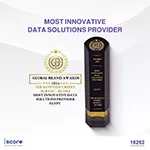Education
New Stanford Class Targets U.S. National Security Problems with Silicon Valley-style Innovation

Student teams at Stanford use “lean launch pad” startup methodology to innovate at speed and find technological solutions for critical challenges facing America’s defense and intelligence agencies.
Several tech-savvy Stanford students are delivering a passionate pitch about a product they hope is going to change the world, while a room full of venture capitalists, angel investors and entrepreneurs peppers them with questions.
But there’s a twist. This Stanford classroom is also packed with decorated military veterans and active duty officers.
And a group of analysts from the U.S. intelligence community is monitoring the proceedings live via an iPad propped up on a nearby desk.
These Stanford students aren’t just working on the latest “Uber for X” app. They’re searching for solutions to some of the toughest technological problems facing America’s military and intelligence agencies as part of a new class called Hacking for Defense.
“There’s no problems quite like the kind of problems that the defense establishment faces, so from an engineering standpoint, it has the most powerful ‘cool factor’ of anything in the world,” said Nitish Kulkarni, a senior in mechanical engineering.
Kulkarni’s team is working to devise a system that will provide virtual assistance to Afghan and Iraqi coalition forces as they defuse deadly improvised explosive devices.
“At Stanford there’s a lot of opportunities for you to build things and go out and learn new stuff, but this was one of the first few opportunities I’ve seen where as a Stanford student and as an engineer, I can go and work on problems that will actually make a difference and save lives,” Kulkarni said.
A 21st century tech ROTC
That’s exactly the kind of “21st century tech ROTC” model of national service that Steve Blank, a consulting associate professor in the Stanford School of Engineering’s Department of Management Science and Engineering, said he had in mind when he developed the class.
“The nation is facing a set of national security threats it’s never faced before, and Silicon Valley has not only the technology resources to help, but knows how to move at the speed that these threats are moving at,” Blank said.
The students’ primary mission will be to produce products that can help keep Americans and our allies safe, at home and abroad, according to Blank.
Former U.S. Army Special Forces Colonel Joe Felter, who helped create the class and co-teaches with Blank, said the American military needs to find new ways to maintain its technological advantage on the battlefield.
“Groups like ISIS, al-Qaeda and other adversaries have access to cutting edge technologies and are aggressively using them to do us harm around the world,” said Felter, who served in Iraq and Afghanistan and is currently a senior research scholar at Stanford’s Center for International Security and Cooperation (CISAC) and a research fellow at the Hoover Institution.
Felter added, “The stakes are high – this is literally life and death for our young men and women deployed in harm’s way. We’re in a great position here at Stanford and in Silicon Valley to help make the connections and develop the common language needed to bring innovation into the process, in support of the Department of Defense and other government agencies’ missions.”
Tough technological challenges
Months before the course start date, class organizers asked U.S. military and intelligence organizations to identify some of their toughest technological challenges.
U.S. Army Cyber Command wanted to know if emerging data mining, machine learning and data science capabilities could be used to understand, disrupt and counter adversaries’ use of social media.
The Navy Special Warfare Group asked students to design wearable sensors for Navy SEALs, so they could monitor their physiological conditions in real time during underwater missions.
Intelligence and law enforcement agencies were interested in developing software that could help identify accounts tied to malicious “catfishing” attempts from hackers trying to steal confidential information.
And those were just a few of the 24 problems submitted by 14 government agencies.
Developing solutions
The class gives eight student teams 10 weeks to actively learn about the problem they are addressing from stakeholders and end users and to iteratively develop possible solutions or a “minimum viable product,” using a modified version of Blank’s “lean launch pad methodology,” which has become a revered how-to guide among the Silicon Valley startup community.
A key tenet of Blank’s methodology is what he calls the “customer discovery process.”
“If you’re not crawling in the dirt with these guys, then you don’t understand their problem,” Blank told the class.
One student team, working on wearable sensors for Navy SEALs, earned a round of applause from the class when the team members showed photos from a visit to the 129th Rescue Wing at Moffett Field where they went to find out what it felt like to wear a military-grade dry suit.
Gaurav Sharma, a student at Stanford’s Graduate School of Business, visited an Air Force base in Fresno to log some time inside the 90-pound bomb suit that explosive ordnance disposal units wear in the field.
“You can’t address customer issues unless and until you really step into the shoes of the customer,” Sharma said.
Active duty military officers from CISAC’s Senior Military Fellows program and the Hoover Institution’s National Security Affairs Fellows program act as military liaisons for the class and help students navigate the complex defense bureaucracy.
“I think they will come away from this experience with a much better appreciation of what we do inside the Department of Defense and intelligence community, and where there are opportunities for helping us do our jobs better,” said U.S. Army Colonel John Cogbill, who has spent the last year as a senior military fellow at CISAC.
Inspiring the next generation
Students said the opportunity to work on consequential problems was their inspiration for joining the class.
Darren Hau, a junior in electrical engineering, said, “In Hacking for Defense, I think you’re seeing a lot of people bring that same entrepreneurial mindset into a problem statement that seems a lot more impactful.”
Plans call for expanding the class to other universities across the country, making it like an open source network for solving unclassified national security problems, the teachers say.
“It’s important to enable this younger generation of technologists to actually connect with some of the national security issues we face and give them an opportunity to take part in making the world a safer place,” said Pete Newell, a retired U.S. Army colonel on the teaching team, who was awarded the Silver Star Medal for leading a battalion into the battle of Fallujah, Iraq.




















































